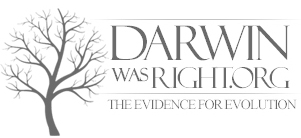Artificial selection demonstrates the diversity that can exist among organisms that share a relatively recent common ancestor. In artificial selection, one species is bred selectively at each generation, allowing only those organisms that exhibit desired characteristics to reproduce. These characteristics become increasingly well developed in successive generations. Artificial selection was successful long before science discovered the genetic basis. Examples of artificial selection would be dog breeding, genetically modified food, flower breeding, cultivation of foods such as wild cabbage, and others.
Overview
The deliberate exploitation of artificial selection has become very common in experimental biology, as well as the discovery and invention of new drugs. Artificial selection can also be unintentional; it is thought that domestication of crops by early humans was largely unintentional.
Contrast to Natural Selection
However, it is useful to distinguish between artificial selection that is unintentional or involves manipulating the environment only, and artificial selection that alter internal DNA sequences in the laboratory. Genetic manipulation in labs can be used to produce the same changes that could be attained by selective breeding faster by Cisgenesis. However, other changes such as Transgenesis introduce DNA into an organism that is not available in the species’ gene pool.
Laboratory Usage
Another technique used in drug development uses an iterative selective process called in vitro selection to evolve aptamers, or nucleic acid fragments capable of binding specific organic compounds with high binding affinity.
Studies in evolutionary physiology, behavioral genetics, and other areas of organismal biology have also made use of deliberate artificial selection, though longer generation times and greater difficulty in breeding can make such projects challenging in vertebrates.
Artificial Selection PowerPoint, University of Wisconsin-Madison
Buffum, Burt C. Arid Agriculture; A Hand-Book for the Western Farmer and Stockman, p. 232. Accessed at [1], June 20, 2010.
Lush, Jay L. Animal Breeding Plans, p. 21. Accessed at [2], June 20, 2010.
Jan Z. Wilczynski (December 1959), “On the Presumed Darwinism of Alberuni Eight Hundred Years before Darwin”, Isis 50 (4): 459–466 [459–61], doi:10.1086/348801
Darwin 1859, p. [3]
Darwin 1859, pp. 197–198
Swallow JG, Garland T, Jr. (2005). Selection experiments as a tool in evolutionary and comparative physiology: insights into complex traits—an introduction to the symposium. Integr Comp Biol, 45:387–390.PDF
Garland T, Jr. (2003). Selection experiments: an under-utilized tool in biomechanics and organismal biology. Ch.3, Vertebrate Biomechanics and Evolution ed. Bels VL, Gasc JP, Casinos A. PDF
Garland T, Jr., Rose MR, eds. (2009). Experimental Evolution: Concepts, Methods, and Applications of Selection Experiments. University of California Press, Berkeley, California.
